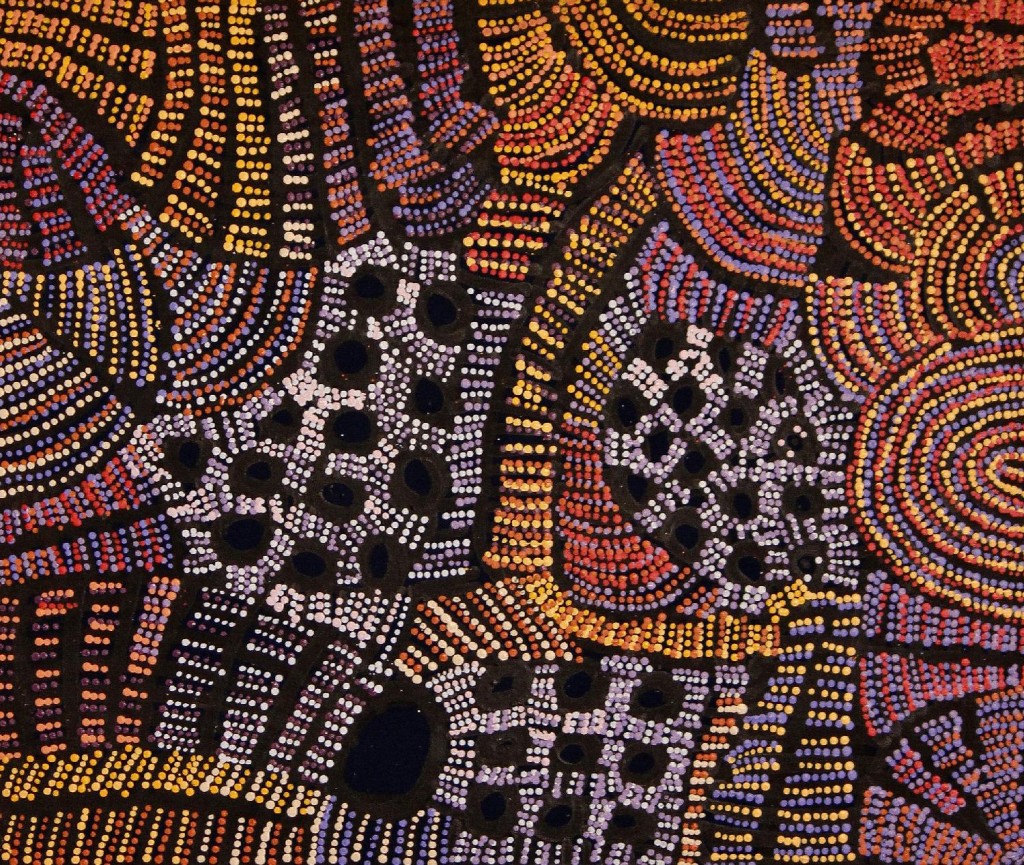Organised by IDAIA – International Development for Australian Indigenous Art, the exhibition gathers paintings created by artists from the community of Papunya Tjupi.
Context
- A historical exhibition is about to open at the Musée du quai Branly. Originating from the National Gallery of Victoria in Melbourne, Australia, the exhibition “Tjukurrtjanu: Origins of Western Desert Art” is exclusively hosted by the Parisian museum from October 9th, 2012 to January 20th, 2013. It celebrates the 40th anniversary of the Papunya Tula movement, starting point of the contemporary Aboriginal acrylic painting. This groundbreaking exhibition gathers over 200 paintings and 70 objects, including some of the first artworks created by the very artists who initiated this movement in the 1970s.
- On this special occasion, IDAIA proposes three simultaneous exhibitions, with distinct scopes and contents, but all designed towards a single objective: offering an alternative and contemporary perspective in response to the Musée du quai Branly exhibition.
- The Autumn Festival organised by the antique dealers and galleries of Versailles, which is the occasion for Karin Carton, the exhibition space’s owner, to exhibit Aboriginal art – for the first time in Versailles.
Synopsis
Dedicated to the artist cooperative of Papunya Tjupi located in the historical community of Papunya, this exhibition falls in the historic line of the works displayed at the Musée du Quai Branly, since the exhibited artists are the direct descendants of the founders of the Papunya Tula movement.
It operates as an open window onto today’s Aboriginal art, between tradition – through the use of dots and the depiction of ancestral Dreams – and modernity – through the beautiful, innovative interpretation and artistic representation of these ancient symbols and myths.
